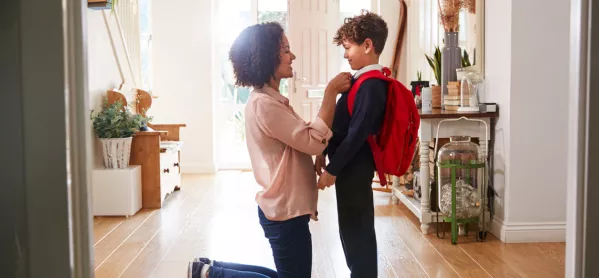- Home
- Will Covid mean a boom time for private schools?
Will Covid mean a boom time for private schools?

Covid-19 is turning independent schools into a Schroedinger sector. These schools seem to be in any number of different positions: dying and flourishing simultaneously, depending on which box they’re put in, who is observing our behaviour and what measure is being applied to our status.
Perhaps only when the new term begins will we be able to see whether the reported 30 per cent growth in interest in fee-paying schools has saved us, or if this tentative curiosity from first-time buyers has failed to materialise, killing this particular cat and bringing all hope of revival down to earth with a crash.
A confusing picture is beginning to emerge from the Covid chaos. There is no doubt that many independent schools have performed well during this crisis: research suggests that 31 per cent of private schools taught four or more lessons daily, compared with 6 per cent of state schools.
Thus they have provided their students with not only a (relatively) uninterrupted education, but have kept them in touch with each other: classes have run, conversations have taken place, wellbeing has been checked on, friendship groups have been retained.
A familiar and dependable centre
As things have fallen apart everywhere else, independent schools have provided a familiar and dependable centre for their families to hold on to and cherish. And this has proven to be more valuable and lasting than anything that can be ranked and calculated.
None of this should be a surprise: many (but not all) of these schools have outstanding facilities. They can innovate quickly, working outside those various restrictive boxes constructed by a local authority, the Department for Education, or the NEU teaching union.
Crucially, not only are the majority of staff and students in independent schools fortunate enough to be able to access mobile technology, but they used it long before lockdown. As any teacher who has looked in a school store cupboard - often filled with redundant bits of yellowing kit, dumped on the staff by over-zealous senior leadership teams in thrall to being cutting edge - knows, it’s one thing to have some technology in your classroom, but the challenge is making it work so that children remain engaged and learning.
Independent schools were able to switch to digital teaching quickly, effectively and at scale because they know its many strengths, as well as its limitations.
Paying for outstanding service
And, of course, their parents expected it. After all, they are paying a lot of money to get an outstanding service, and those fees would soon dry up if the daily lessons stopped, the homework was not marked and the individual support was switched off.
Value for money is not something people like to attach to education, preferring to see it as something finer, purer, unsullied by market forces. But, as in many other areas, it can be a powerful tool for pushing up and maintaining high standards.
Little wonder, then, that some state-school parents are looking at an uncertain future of considerable and regular disruption, and are contemplating moving sectors.
For parents committed to a state-school education, but who want their children to continue to have regular contact time with their teachers, the dilemma must be visceral. What do you put first: your child’s education? Your savings? Your principles? For the majority, of course, such a consideration is a luxury in itself. But no doubt some will surprise themselves by being tempted.
More vulnerable than ever
Should they decide to visit those schools before term starts, they may find a sector not in the rude health that this reported rise in popularity prepared them for. Those schools - caricatured by their enemies as uncaring, ruthless engines of privilege - are more vulnerable than ever. The economic crisis is beginning to hurt their parents, and the closures that we have started to see in rural areas will continue as parental businesses suffer. No doubt some schools will be absorbed into the state sector.
Staffing, too, is brittle and under strain: unlike in the state sector, there will be no pay rises this year for teachers in independent schools, and salary reductions have become too familiar to many. Furthermore, independent schools are leaving the Teachers’ Pension Scheme at an increasing rate, and some schools are now laying off both teaching and support staff.
Many independent schools have as much in common with Eton as that school has with Hogwarts. They may be in the same sector, but they exist in different worlds.
A crisis of this proportion reminds us how important it is to have a range of school models working together to serve the needs of an advanced and complex society: one size and one system cannot meet the needs of all.
Independent schools have shown - albeit with resources that the government should seek to emulate - what is possible. We need to learn from each other and hope that as one sector thrives so too will the other, and that our young people will benefit from this.
In order for this to happen, all schools need to be supported, kept open and encouraged to innovate and to think outside their limiting boxes.
David James is deputy head (academic) at a leading UK independent school. He tweets as @drdavidajames
Keep reading for just £1 per month
You've reached your limit of free articles this month. Subscribe for £1 per month for three months and get:
- Unlimited access to all Tes magazine content
- Exclusive subscriber-only stories
- Award-winning email newsletters



